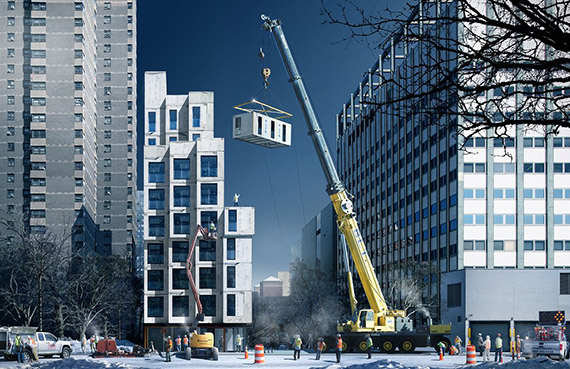When NYC’s first micro-units were announced, writer Fran Lebowitz blasted them. She echoed a popular sentiment that “people shouldn’t live in a shoebox. It’s not good for human beings.”
But others argue that smart design and luxury amenities make new micro-units anything but shoeboxes. Moreover, they are often seen as a solution to the housing crisis (i.e., the lack of affordable housing). So who is right?
“I don’t think there is any evidence out there that people are harmed by living in spaces smaller than four hundred square feet,” Ingrid Gould Ellen, the director of the Furman Center for Real Estate and Urban Policy at New York University, told the New Yorker.
But whether they are actually harmful or not, there is the question of whether they are a realistic solution to the needs of working people trying to eek by in the city.

Rendering of Carmel Place, a micro-unit development at 335 East 27th Street in Kips Bay (credit: nARCHITECTS)
“It might not really work,” Alan Berube, deputy director and senior fellow at Brookings, told the New Yorker. “More supply is better, but we shouldn’t kid ourselves that micro-apartments alleviate the burdens low-income renters are facing.”
He added that low-income renters are most often families with children who need larger apartments.
Micro-apartments do genuinely seem like a solution for single professionals and perhaps the elderly. But they are certainly not a panacea to the city’s housing problems.
As the New Yorker writes: “In a city where many pay half of their income or more on rent, about a thousand dollars a month for a brand-new room of one’s own—or a shoebox of one’s own, as Fran Lebowitz might put it—seems, on its face, like a phenomenal deal. A few tenants will soon find out whether that’s the case.” [New Yorker] –Christopher Cameron
